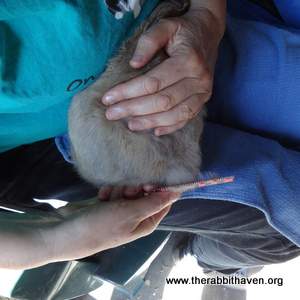 Grooming your rabbit includes fur brushing, fur trimming as need be, mat removal, and removal of debris caught up in the rabbit's fur. Grooming also includes cleaning the eye areas, ears, the bottom side of your rabbit and nail trims. Care of the rabbit's fur and skin calls for your observation to check for the presence of parasites and your quick action to provide needed treatment. This article will highlight all the essential rabbit grooming basics and will help you understand how to properly groom your bunny. A well groomed bunny is a happier, healthier bunny.
Grooming your rabbit includes fur brushing, fur trimming as need be, mat removal, and removal of debris caught up in the rabbit's fur. Grooming also includes cleaning the eye areas, ears, the bottom side of your rabbit and nail trims. Care of the rabbit's fur and skin calls for your observation to check for the presence of parasites and your quick action to provide needed treatment. This article will highlight all the essential rabbit grooming basics and will help you understand how to properly groom your bunny. A well groomed bunny is a happier, healthier bunny.
Fur Brushing: By careful brushing of our rabbits, we hope to remove the excess fur to prevent the ingestion of fur. This is essential to prevent illness such as GI blocks. We also want to help the rabbit clean their fur and prevent fur clumping or matting which can irritate their skin. The rabbit constantly groom themselves, so they will always have some hair in their system. Our job in the grooming process is to limit their intake of fur and also to help keep the fur and skin of the rabbit clean and mat free.
Keeping the eyes clear of hay or fur will prevent irritation and potential infection of your rabbit's eyes. We use moistened cotton balls and gently clean the area around the eye. If your rabbit tends to have a heavy amount of fur around their eyes, you may use a tool called a mascara brush or a small flea comb to comb back the fur from the eye.
Keeping the rabbit's ears free of debris or wax is important. Removal of wax build up from outer ear is helpful. Lop rabbits may tend to have damp areas inside their ears which you need to keep clean and dry or they may suffer from an ear infection or inflammation which will require veterinary care.
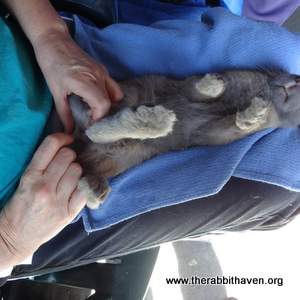 Basic cleaning: Check the bottom side of your rabbit to make sure that no excess urine or droppings have remained on his underside. If so, remove them. Wipe off any of these substances and dry. Keep a watchful eye for any signs of urinary track issues and illness such as cecal overproduction or diarrhea. Seek vet care if you see this in your rabbit. Be sure to keep your litter box clean also so bunny is not forced to sit on their urine or droppings. Nail trims: Keeping nails trimmed will prevent snags, torn nails and possible infection to the nail bed and toe. Monthly nail trims are recommended.
Basic cleaning: Check the bottom side of your rabbit to make sure that no excess urine or droppings have remained on his underside. If so, remove them. Wipe off any of these substances and dry. Keep a watchful eye for any signs of urinary track issues and illness such as cecal overproduction or diarrhea. Seek vet care if you see this in your rabbit. Be sure to keep your litter box clean also so bunny is not forced to sit on their urine or droppings. Nail trims: Keeping nails trimmed will prevent snags, torn nails and possible infection to the nail bed and toe. Monthly nail trims are recommended.
Grooming is part of the normal health care routine of a rabbit. Rabbits are delicate animals and their grooming needs to be carried out on a regular basis, with gentle care. The grooming process is a wonderful way to bond with your rabbit. Take your time. Learn what you need to do and carry out grooming as part of your normal interaction with your rabbit. As you have read, all grooming relates directly to keeping your rabbit disease free and healthy.
How often to brush a rabbit: Rabbits need to be brushed at least every three days. In addition to removing any loose hair, these brushing sessions help prepare them for the multiple daily brushings that they need when heavy sheds begin. (These heavy shed cycles may occur about three times per year or more). Rabbits will shed in different ways. Some rabbits will take a couple of weeks or more to loose their old coat of fur. Other rabbits will be ready to get rid of their old coats just a few days. Quick shedding rabbits require immediate grooming to prevent illness.
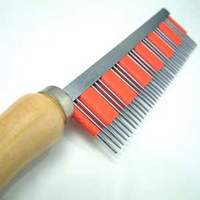
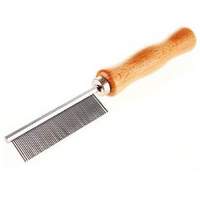
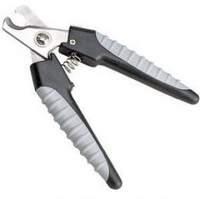
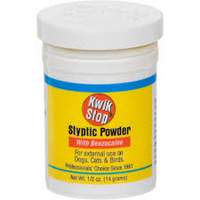
Common tools used to groom a rabbit:
- Slicker brush or another type of brush designed to groom the specific fur type of your rabbit
- Fur splitter. Wide toothed comb for removing mats in fur
- Scissors for cutting out mats. (Use only after instruction on how to use scissors on rabbit)
- Mini shaver for certain breeds. We recommend the mini Arco by Wahl
- Nail clipping scissors, clippers and a small flashlight for back light
- Kwick Stop or other styptic powder to stop bleeding from nails
- Flea comb
- Disinfectant solution for cuts or injury to skin. Chlorhexaderm or Betadine solutions are good options to have on hand. (available at pharmacies)
- Mineral oil for cleaning sensitive scent gland areas on the rabbit
- Eye wash for cleaning the eye area
- Cotton balls (for cleaning)
- Q-tips for outer ear cleaning and scent gland cleaning
Special tools: Furmitator, Fur buster, wide tooth and fine tooth combs, varied length combs, flea comb with handle. Possibly a Zoom Groom or other rubberized mitt or tool is great to use to follow up grooming. The grooming Tools you select will depend on your rabbit's fur length and breed.
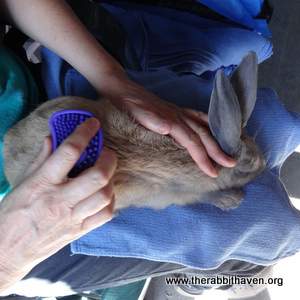 The Rabbit's Brushing details: Brush your rabbit every three days. When the rabbit is shedding (they usually shed about every 3 months), more frequent brushing is recommended. During the heavy part of a shed, daily brushing is ideal. Keep in mind that rabbit skin is quite fragile, so be gentle and use a brush designed for rabbits if possible. A bristle brush is preferable to a metal toothed slicker which may hurt their skin. What ever grooming tool you use, be gentle and careful not to injure your rabbit. Following up with a rubber grooming tool such as a Zoom Groom or another lightweight hand finish grooming tool. During heavy shed times you may also gently lift off tufts of fur post grooming. Most rabbit do not mind this gentle process.
The Rabbit's Brushing details: Brush your rabbit every three days. When the rabbit is shedding (they usually shed about every 3 months), more frequent brushing is recommended. During the heavy part of a shed, daily brushing is ideal. Keep in mind that rabbit skin is quite fragile, so be gentle and use a brush designed for rabbits if possible. A bristle brush is preferable to a metal toothed slicker which may hurt their skin. What ever grooming tool you use, be gentle and careful not to injure your rabbit. Following up with a rubber grooming tool such as a Zoom Groom or another lightweight hand finish grooming tool. During heavy shed times you may also gently lift off tufts of fur post grooming. Most rabbit do not mind this gentle process.
If you have an Angora rabbit, grooming is a daily ritual unless you trim down the fur. You will need to make sure that the rabbit is not collecting hay or litter in their fur which can cause matting. Pieces of hay can also work their way down to the rabbit's skin. You may also choose to trim the long hair down on your rabbit to a length of about 1 inch to prevent matting and fur blockages caused by fur ingestion. You can trim it yourself or have a groomer to do it and just do touch-up trims at home. You must be very careful about trimming their fur since the rabbit's skin is quite thin and easy to cut accidentally. With these rabbits, daily brushing is recommended.
Long haired rabbits will sometimes develop fur mats, large clumps of tangled fur. Rabbit skin is delicate and highly susceptible to cuts, so using scissors to remove mats is the last resort. Instead, use a mat splitter or mat rake to take the matt apart. When using these tools remember how delicate the rabbit's skin is and groom gently. We have many special procedures to show you including mat flowering techniques to open the mat, making removal easier, the use of mat splitter tools, and strategic trimming.
Shaving tools:At times mats become too difficult to remove from the rabbit and must be shaved. When sheet mats form, you have no choice. One recommended shaving tool in the Mini Arco by Wahl and for a complete sheet mat shaving, you may need to go to a professional or purchase a FAV5CL Clipper, a $500 clipper that is the true workhorse of all clippers. We actually prefer the Wahl Mini Arco Animal Trimmer. At a cost under $100.00, this trimmer is an excellent choice. This trimmer can get into hard to reach spaces and also has replaceable blades. It can be used on the genital area and it is a smaller unit allowing for maximum control when trimming. This grooming tool will work for most shaving needs.
For information regarding grooming an English angora rabbit, contact the Haven for detailed instruction. Certain English angora rabbits have fur coats that may groom out to 3 to 4 inches or more. You must know what you are doing or seek professional grooming care before you take on grooming an English angora rabbit.
Scent Glands: Rabbits have scent glands both under their chin and in their genital area. The only scent glands that may require cleaning are the scent glands by the anus of the rabbit. When these scent glands build up, the rabbit often has an unpleasant odor and the scent gland duct may actually become blocked due to the build up of this waxy substance. Material that builds up in the scent gland area may become very hard and uncomfortable for the rabbit. It's simple to clean the glands. Simply dip a Q-tip or cotton ball into mineral oil and hold your rabbit in a safe position that gives you access to the genitals. Locate the two slits on either side of the rabbit's genitals. Take the Q-tip and allow the mineral oil to moisten the area. In a minute or two you may easily remove the build up. Be very careful as the genital scent gland membrane is delicate. Remove this material with care or risk tearing the membrane in the scent gland.
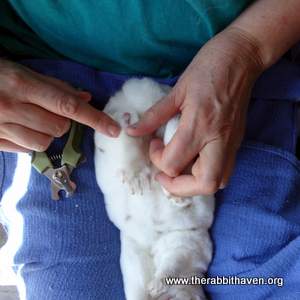 Feet: Part of grooming includes checking the feet top and bottom for any signs of fur wear or injury. Mats may also form on the foot pad. Remove these mats carefully. The rabbit needs their fur padding on their feet to prevent injury to their tender skin. If the padding (fur) on the feet is worn down, exposing inflamed or callused skin, then soft dry resting pads (rugs) may be provided. Exposed skin that becomes urine burned or broken is very likely to become infected. Take extra care that rabbit rugs and litter boxes are kept clean and dry. Read our supplemental article on hock injury for more detailed information if your rabbit has problems with hock injury.
Feet: Part of grooming includes checking the feet top and bottom for any signs of fur wear or injury. Mats may also form on the foot pad. Remove these mats carefully. The rabbit needs their fur padding on their feet to prevent injury to their tender skin. If the padding (fur) on the feet is worn down, exposing inflamed or callused skin, then soft dry resting pads (rugs) may be provided. Exposed skin that becomes urine burned or broken is very likely to become infected. Take extra care that rabbit rugs and litter boxes are kept clean and dry. Read our supplemental article on hock injury for more detailed information if your rabbit has problems with hock injury.
Ears: Ear wax from the outer ear can be removed from the outer ear with a cotton swab. Be careful not to push on wax in the canal, and no not attempt to reach deep into the ear canal. Your vet may recommend a variety of wax removal products as need be for your bunny.
Nail Trims: Check the nails once a week when grooming and trim the nails whenever they get a bit long. I find it is better to do frequent trims even if you are only trimming a sliver off than wait until the nail is quite long and trying to judge how much to remove. Rabbit nails can grow to be very long and will be uncomfortable for the rabbit. Allowing nails to grow too long may cause toe or nail injuries, foot injury and gait issues for your bunny.
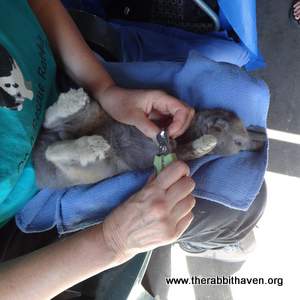 How to trim bunny nails: Place the bunny in a comfortable position where you can easily reach their feet. We tend to do nail trims with the rabbit laying on our laps with feet up towards us, or having the rabbit in a standing potion on a table where the rabbit is comfortable and we can pick up one foot at a time to trim the nails. A third choice is to use a cuddle approach/hold, where the rabbit is cradled ion one arm as we trim the nails. Some people also use a towel to wrap their rabbit to keep bunny secure. Then they bring out one foot at a time to trim.
How to trim bunny nails: Place the bunny in a comfortable position where you can easily reach their feet. We tend to do nail trims with the rabbit laying on our laps with feet up towards us, or having the rabbit in a standing potion on a table where the rabbit is comfortable and we can pick up one foot at a time to trim the nails. A third choice is to use a cuddle approach/hold, where the rabbit is cradled ion one arm as we trim the nails. Some people also use a towel to wrap their rabbit to keep bunny secure. Then they bring out one foot at a time to trim.
If the rabbit has light colored nails their nails will be easier to trim as you can see where the blood supply or Quick starts and can trim below that line. Dark colored nails are harder to see through and therefore, you may want to use a back light (flashlight) which will allow you to see the nail quick. Some people use a touch spring back approach and I do not recommend that. It does work for very experienced people.
Trimming baby rabbit nails: Baby rabbit nails are very sharp and we recommend using an emery board to gently trim tips of their nails. People are often afraid to clip nails for fear that they will trim incorrectly and cause the rabbit to bleed. So be careful in trimming nails and always have on hand a septic powder product in case you make a mistake and the rabbit's nail bleeds. You can purchase a product called Kwik Stop to keep on hand for this problem. If the nail bleeds apply a bit of powder to the nail an also apply pressure for a minute. Your veterinarian or staff at any Rabbit Haven adoption show or event will also clip nails for you. Rabbit nails need to be trimmed about every month.
Eyes: Checking your rabbit's eyes for any redness or items like hay or fur that may be in the eye or on the eye rim is a part of grooming. You may use eye wash to remove material from the eye or move it to the edge where you may use a cotton ball to wipe it away. Of course never touch the actual eye. Some people use a special comb to groom fur back from the eye on rabbits that have heavy fur around their eyes.
Skin/Fur: Check for signs/symptoms of Parasites: Check the skin and fur on your rabbit to make sure they are parasite free. Mites, fleas and ticks and other skin disease may all damage your rabbit's skin and impact their health. Signs of parasites: Black fleas are usually seen near the head, face or genital area. Ticks may be found anywhere on the rabbit. Mites appear as dandruff and may cling to fur and skin. A tick is an oval shaped parasite that may be crawling on rabbit's fur or attached to your rabbit's skin. Watch your rabbit for signs of these parasites. Symtoms of these parasites include itching, scratching, flaky skin with bald patches or dandruff like materials near the skin of your rabbit and on the fur close to their skin. Ear mites are more readily observed as they quickly invade the ear, and you will notice the dark dried debris they leave behind. This is extremely irritating to your rabbit, so it is hard to miss. Ear mites are highly destructive and may damage your rabbit's ears. Seek vet care immediately. There are many different types of skin issues that may occur so having regular vet care will help you keep your rabbits skin free of decease and help your rabbit be healthy.
Fleas and Mites: Even when our rabbit are housed indoors they may get fleas, ticks or mites. Other indoor/outdoor animals can carry in parasites. We can also accidently carry in parasites on our shoes and clothing. Fleas, ticks or mites may also be carried in hay from the feed store. For ear mite or tick infestation, check with your veterinarian for medication to eliminate this problem. Medications to prevent and kill fleas on rabbits include Advantage and Revolution. These products are available from your rabbit-savvy veterinarian. Your veterinarian may also elect to use Ivermectin. CONTACT YOUR VET FOR ADVICE ON DOSAGE. USE SPECIFIC DOSE ADVISED BY YOUR VET ONLY. A flea comb is a non-toxic flea removal tool that takes more patience, but it works. Most rabbits learn to love the attention of being flea combed, and it can be used as a supplement to your main flea-control program.
The following products should NOT be used on rabbits:
Frontline has been linked to neurological damage and death in rabbits. The manufacturer of this product has placed a warning on the Frontline label stating that Frontline should never be used on rabbits. Remember, Frontline kills! Flea shampoos, even those considered safe for cats and kittens or advertised as "rabbit safe", are not recommended for use on rabbits. Bathing of rabbits, in general, is strongly discouraged because the stress of the bath itself can cause serious health problems, and has in some cases been linked to the death of the rabbit. Do not use a Flea baths or dips for this reason and there is no safe material we have found that is safe for rabbits.
For environmental flea control, sprays and "bombs" are not recommended, as they may leave harmful residue that the rabbit can ingest. Safer alternatives include diatomaceous earth, worked into the carpet where fleas leave their eggs. Your vet will need to evaluate your rabbit for mite infestations. They may take a skin scraping or the evidence may be so clear that they can tell you right away if it is mites or not. Your Vet will advise you regarding medications to rid your rabbit of mites. When cleaning up during a flea or mite outbreak remember to vacuum carefully and then throw out the vacuum bag and clean off the bottom section of the vacuum that is in contact with the carpet. Steam clean carpet let dry completely then put rabbit into a safe area inside. Use a light colored sheet to be able to see fleas that are still present. Use a flea comb to remove fleas as they die on the rabbit. Follow vet guidelines re use of all flea, tick or mite medications. Keep the rabbit's environment very clean. Learn all about the hatching cycles and when to administer your medication to stop the chronic infestation and rid your bunny of these parasites.
Grooming your rabbit will provide you with wonderful time together. Many rabbits enjoy the grooming session with their humans. Grooming need not be difficult or unpleasant. Make your grooming sessions an opportunity to connect and be with your bunny. Grooming time will quickly become another special time to spend together.
